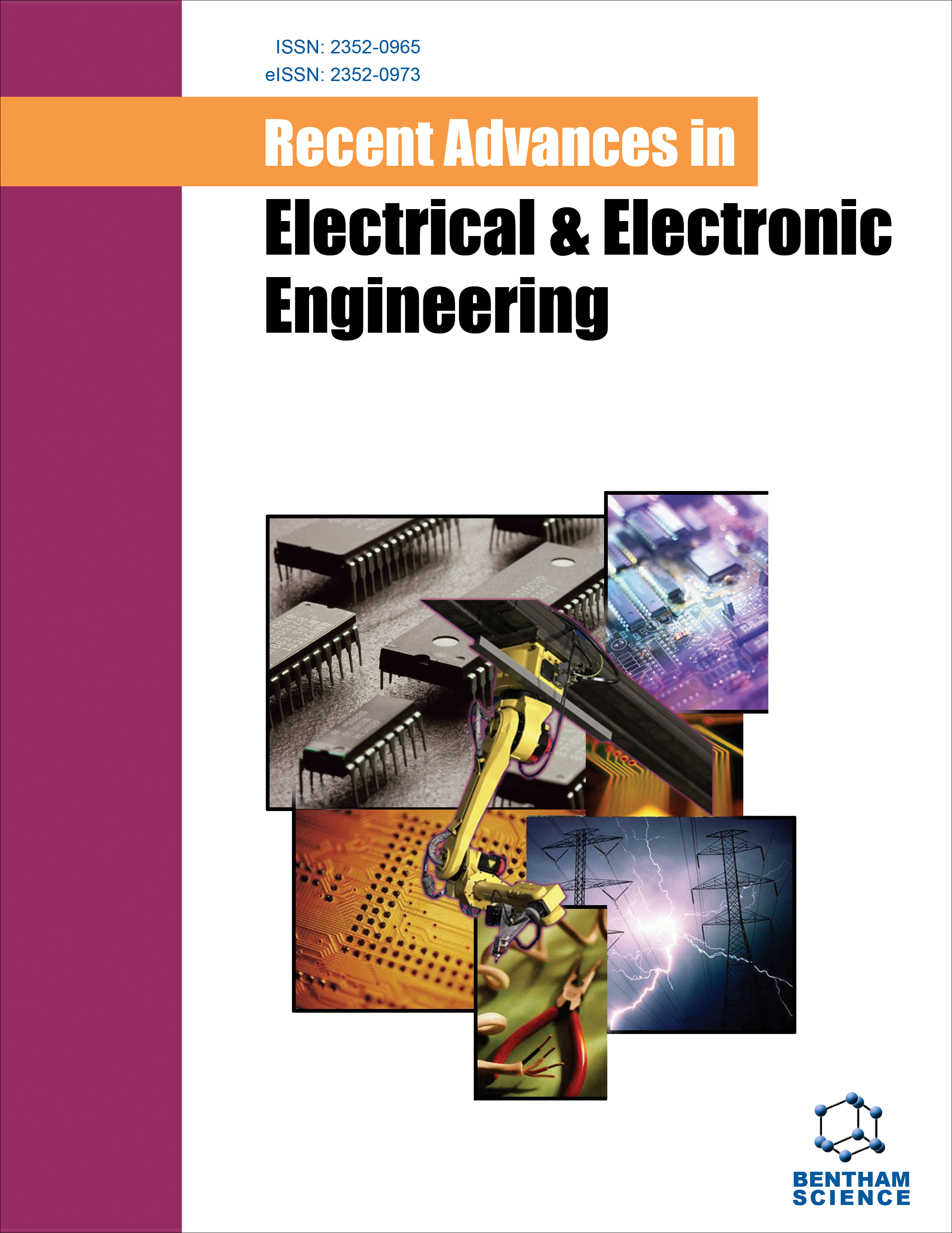- Home
- A-Z Publications
- Recent Advances in Electrical & Electronic Engineering
- Previous Issues
- Volume 17, Issue 1, 2024
Recent Advances in Electrical & Electronic Engineering - Volume 17, Issue 1, 2024
Volume 17, Issue 1, 2024
-
-
Research on Surplus Force (torque) Control and Compensation of Electro hydraulic Load Simulator
More LessAuthors: Bingwei Gao, Wei Zhang, Lintao Zheng and Bin XuThe electro-hydraulic load simulator can simulate any force (torque) load required by the loaded object under test conditions, which greatly reduces the equipment development time and cost. However, the process of force loading inevitably creates a surplus force (torque). The existence of surplus force (torque) in the system will seriously interfere with the loading accuracy of the system and even damage the e Read More
-
-
-
An APT Attack Detection Method of a New-type Power System Based on STSA-transformer
More LessAuthors: Jiexuan Yuan and Yuancheng LiBackground: Complex structures such as a high proportion of power electronic equipment has brought new challenges to the safe and stable operation of new-type power system, increasing the possibility of the system being attacked, especially the more complex Advanced Persistent Threat (APT). This kind of attack has a long duration and strong concealment. Objective: Traditional detection methods target a relativel Read More
-
-
-
Prediction of Transformer Oil Temperature Based on an Improved PSO Neural Network Algorithm
More LessAuthors: Zhiyan Zhang, Weihan Kong, Linze Li, Hongfei Zhao and Chunwen XinIntroduction: In addressing the issue of power transformer oil temperature prediction, traditional back propagation (BP) neural network algorithms have been found to suffer from local optimization and slow convergence. This study proposes an oil temperature prediction model based on an improved particle swarm optimization (PSO) neural network algorithm, which introduces an asymmetric adjustment learning factor and Read More
-
-
-
Direct Load Control Scheme for Flexible Loads under Automated Demand Response Program for Peak Demand Management, Loss Minimization, Asset Management, and Sustainable Development
More LessAuthors: Rajeev K. Chauhan, Sanjay Kumar Maurya and Durg Singh ChauhanBackground: Nowadays implementation of Demand Response (DR) programs in the distribution grid is a necessary planning criterion for distribution utility. Implemented DR programs should be automated, intelligent, well-educated, and more competent than the conventional augmentation techniques to resolve Distribution Network (DN) constraints. Peak demand causes DN to approach its maximum capacities. Peak deman Read More
-
-
-
Optimization of Holding Force for a Climbing Robot Based on a Differential Evolutionary Algorithm
More LessAuthors: Rujeko Masike, Karamjit Kaur, Rajesh Arora and Somalapura N. ShridharaBackground: The advancements in robotic technology have completely revolutionized day-to-day life. In industrial applications, the implementation of robotics is quite advantageous as it may help in performing dangerous tasks like climbing high walls, working in a high-temperature environment, high radiation exposure conditions etc. Methods: This paper presents the design and development of a wall-climbing robot for dam wall i Read More
-
-
-
Multi-Objective Optimization in the Presence of OGIPFC Using NSMMP Algorithm
More LessAuthors: Balasubbareddy Mallala, Venkata P. Papana and Kowstubha PalleBackground: Customers expect quality, uninterrupted power with cost-effective electricity in the latest trend. However, outages, severe storms, old infrastructure, and cost pressures can lead to ambiguity in power generation and transmission. To improve line power transmission capability, the right flexible AC transmission systems (FACTS) device may save millions of dollars. Methods: In this study, a FACTS controller named Opti Read More
-
-
-
A Generation Method of New Power System APT Attack Graph Based on DQN
More LessAuthors: Zijia Wang and Yuancheng LiBackground: The new power system is more vulnerable to Advanced Persistent Threat (APT) than the traditional power system. Objective: This study aims to grasp the intent of the APT attack better; a new generation method of power system APT attack graph based on DQN is proposed. Methods: First, the network topology of the new power system was extracted by Nessus scanning as the model input. Secondly, the age Read More
-
-
-
Detection of Prostate Cancer using Ensemble based Bi-directional Long Short Term Memory Network
More LessAim and Background: In recent periods, micro-array data analysis using soft computing and machine learning techniques gained more interest among researchers to detect prostate cancer. Due to the small sample size of micro-array data with a larger number of attributes, traditional machine learning techniques face difficulty detecting prostate cancer. Methodology: The selection of relevant genes exploits useful infor Read More
-
Most Read This Month
Article
content/journals/raeeng
Journal
10
5
false
en


